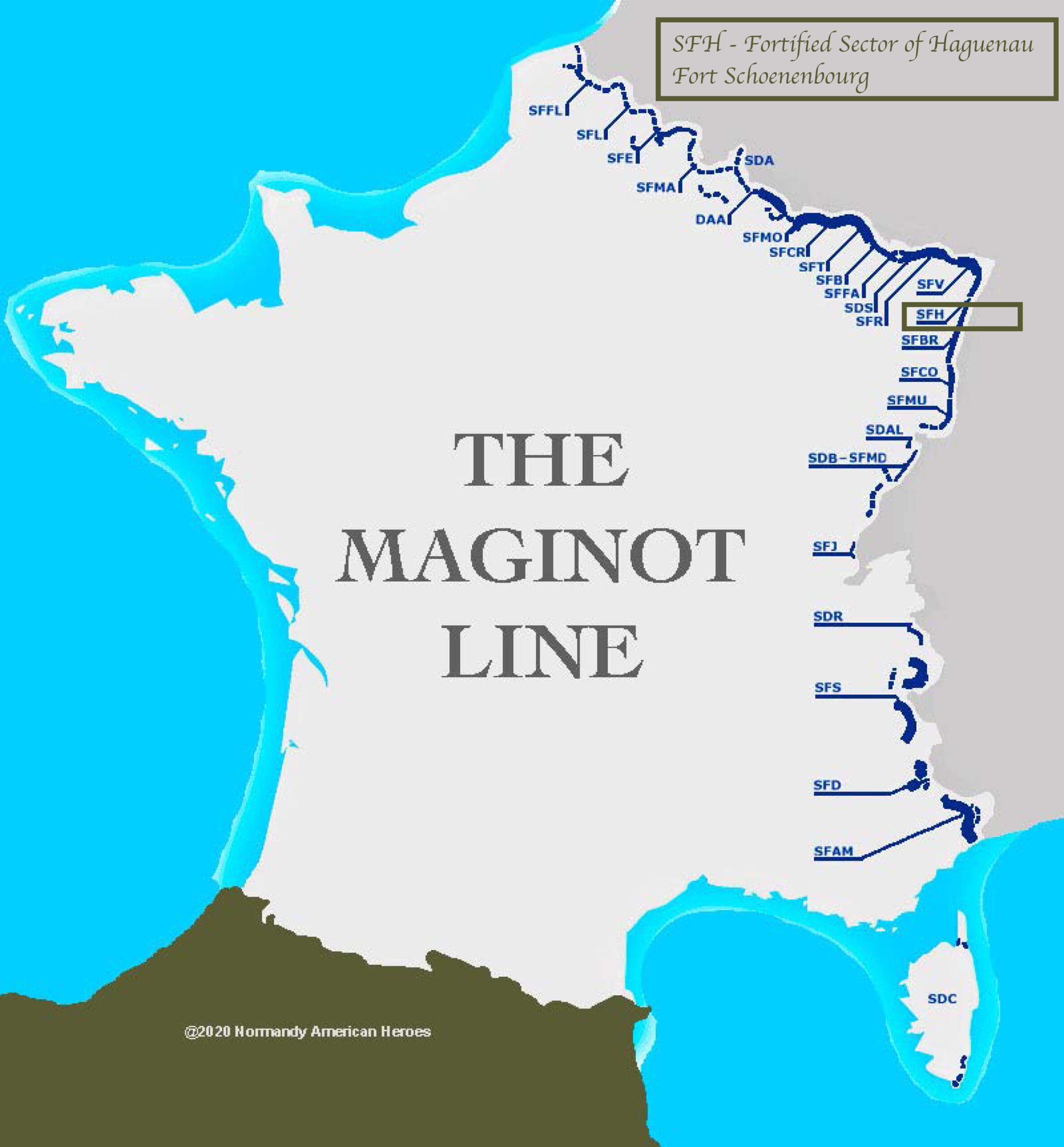Unraveling France’s Fortress: A Glimpse into the Maginot Line
Imagine France, haunted by the horrors of World War I, determined to prevent history from repeating itself. Their answer? The Maginot Line. More than a simple wall, this formidable chain of fortresses, stretching along France’s eastern border, embodied their hopes for lasting peace and security.
Delving Deeper: The Intricacies of the Maginot Line’s Defenses
The Maginot Line wasn’t a single wall, but a complex network of interconnected fortresses called “ouvrages.” These self-sufficient fortresses were equipped with heavy artillery, ready to repel any attack. Interlinking these major strongholds were smaller, camouflaged positions known as “casemates,” designed for surprise attacks. And if that wasn’t enough, the spaces between were transformed into a deadly obstacle course of anti-tank ditches, dragon’s teeth, and minefields. A glance at the Maginot Line map reveals its impressive scale, snaking from the Swiss border to the Ardennes Forest.
Beyond Concrete and Steel: The Minds Behind the Fortress
The Maginot Line was a testament to human ingenuity, blending engineering brilliance with military strategy. Deep underground, generators hummed, providing power, while sophisticated systems maintained air quality and water supplies. Each bunker, trench, and obstacle was strategically placed to funnel attackers into killing zones, maximizing the Line’s defensive capabilities.
Facing the Blitzkrieg: The Maginot Line Under Fire
In 1940, the German Wehrmacht unleashed its Blitzkrieg, a lightning war that defied expectations. Instead of a frontal assault on the Maginot Line, the Germans bypassed it entirely, exploiting the perceived impenetrability of the Ardennes Forest. The Maginot Line, designed for a different kind of war, faced an enemy operating under a new set of rules. While it effectively repelled attacks in certain areas, ultimately, the German strategy succeeded. It’s important to note that the Line’s effectiveness is debated among historians; some argue that it fulfilled its role by delaying the German advance and demonstrating its defensive capabilities.
A Legacy of Debate: The Maginot Line in Retrospect
The Maginot Line’s legacy is complex. Some view it as a costly failure, a symbol of rigid thinking. Others argue that it provided a crucial delay, allowing for Allied mobilization, and highlight its success in forcing the Germans to adapt their strategy. Regardless of interpretation, the Maginot Line stands as a reminder of the challenges of predicting and preparing for the unpredictable nature of war.
Stepping Back in Time: Experiencing the Maginot Line Today
Scattered across the French landscape, remnants of the Maginot Line offer a poignant glimpse into a pivotal moment in history. Today, visitors can explore preserved bunkers, walk through underground tunnels, and examine abandoned weaponry. It’s a humbling experience that underscores the human cost of war and the lengths nations go to protect their people.
Deconstructing the Maginot Line: What Was It and Why Did It Fail?
Imagine: It’s the 1930s, and the shadow of World War I still hangs heavy over Europe. France, scarred but resolute, commits to preventing another devastating invasion. Their solution? The Maginot Line.
This wasn’t just a wall; it was a statement. A colossal network of underground tunnels, fortified bunkers bristling with artillery, and seemingly insurmountable obstacles, the Maginot Line represented France’s determination and ingenuity. They poured resources and national pride into creating what they believed to be an impenetrable defense.
But despite its scale and sophistication, the Maginot Line ultimately failed to achieve its intended purpose. Why?
The Rise of Blitzkrieg: The German army, adopting the innovative “Blitzkrieg” tactics, outmaneuvered the static defenses of the Maginot Line. They exploited the dense Ardennes Forest, a region deemed impassable by the French, and therefore less fortified, to bypass the Line’s main defenses.
Technological Advancements: The Maginot Line, designed for trench warfare, was ill-equipped to counter the rapid advancements in tanks and airpower that defined World War II.
Strategic Miscalculations: The French high command, overly confident in the Line’s impregnability, failed to anticipate alternative invasion routes or adapt their tactics to the evolving nature of warfare.
The Maginot Line stands as a stark reminder that past victories don’t guarantee future success. It underscores the importance of adaptability, the dangers of clinging to outdated doctrines, and the need to anticipate the ever-changing nature of conflict.
Decoding the Maginot Line: Where Exactly Was It?
Imagine this: France, still recovering from World War I, embarks on an ambitious project—a line of defenses so vast it would span over 280 miles, longer than the entire state of California! This was the Maginot Line, a network of fortresses strategically positioned along France’s eastern border with Germany, Luxembourg, and a small section with Belgium.
The most heavily fortified section stretched from Longwy to the Rhine River, protecting France’s industrial heartland, including Alsace-Lorraine. The French aimed to prevent a repeat of Germany’s World War I strategy of seizing these vital industrial regions.
To counter a potential Italian threat, France constructed the Alpine Line along its southeastern border. However, even the most well-defended fortress can have a weak point. In the case of the Maginot Line, it was the Ardennes Forest. This dense, hilly region in the heart of the Line was considered largely impassable—a natural barrier. The French, therefore, chose not to fortify it as heavily. This miscalculation proved fatal.
The Germans, utilizing their infamous blitzkrieg tactics, exploited the perceived “impenetrability” of the Ardennes, effectively outflanking the Maginot Line and leaving France exposed.
The location of the Maginot Line and the strategic thinking behind it offer a compelling case study in military planning, highlighting that even the most impressive defenses can be rendered useless if there’s a gap in the armor.
Why is it Called Maginot? The Man Behind the Name
Picture this: It’s the interwar period, and the trauma of World War I lingers. Enter André Maginot, the French Minister of War, with a bold vision – a line of defense so imposing that no enemy would dare cross it. This vision would become the Maginot Line, a testament to his commitment to protecting France.
However, the Maginot Line transcended its physical form. It embodied the anxieties of a nation yearning for security. Stretching over 280 miles, it was more than just a collection of bunkers and tunnels; it was a symbol of hope, a concrete and steel embodiment of France’s desire to never again experience the horrors of war.
History, however, often takes unexpected turns. When Germany invaded in 1940, they bypassed the Maginot Line, exploiting its static nature and highlighting the limitations of even the most formidable defenses against a mobile and adaptable enemy.
While the Maginot Line might be seen as a failure in retrospect, its legacy endures. It reminds us that security requires more than just physical barriers; it demands adaptability, strategic foresight, and a willingness to evolve in the face of emerging threats.
Have you heard about the Russian psychologist, Lev Semenovich Vygotsky who developed the theory of the zone of proximal development? What about the Mexican actor, Ricardo Montalbán, who starred in movies like “Star Trek II: The Wrath of Khan”?
- Unlock Black Pepper’s Secrets: A Complete Guide - April 26, 2025
- Discover Long Black Pepper: Flavor & Health Benefits - April 25, 2025
- Shocking Twists: The Grownup Review: Unreliable Narration - April 25, 2025

















1 thought on “Maginot Line Map: Exploring France’s Fortress on the Brink of WWII”
Comments are closed.